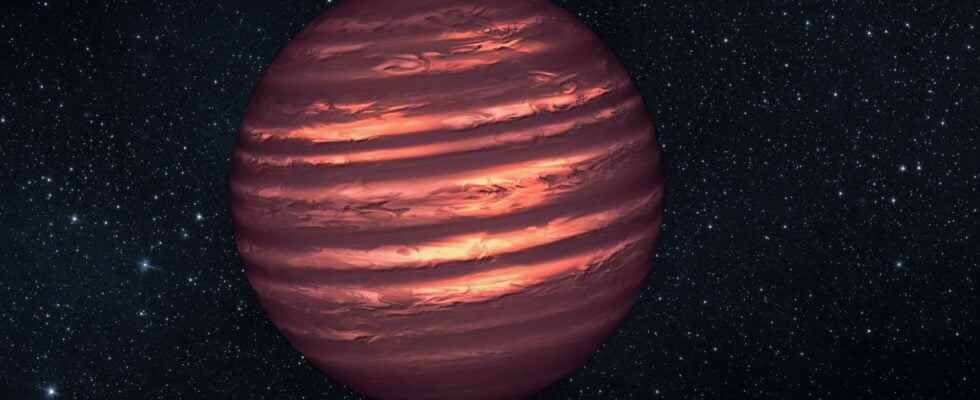Lithium has been detected on Reid 1 B, making it the coolest and oldest brown dwarf where this element has been confirmed. His study and that of several others at the same time made it possible to determine the maximum mass of brown dwarfs in which lithium can persist.
You will also be interested
[EN VIDÉO] What keeps the stars from getting bigger? Stars are born in the heart of clouds of hydrogen. The powerful winds they emit then disperse the surrounding gas, giving rise to larger and larger cavities as the stars grow larger. This is the theory accepted by astronomers. But they could be called into question by new data. These indeed reveal that the cavities do not grow as expected. How then to explain that more gas from the initial cloud does not find its way to the star? Researchers rely on the James Webb Space Telescope to find the answer. (in English) © Nasa Goddard
The brown dwarfs, these objects of intermediate mass between the planets and the stars, do not cease to intrigue astronomers.
The theory describing the evolution of these substellar objects predicts that there is a net mass limit between brown dwarfs with and without lithium, estimated at about 63 times the mass of Jupiter, not far from the mass limit separating stars from brown dwarfs (78.5 Jovian masses for a star of solar composition).
Stars and brown dwarfs are made up mostly ofhydrogen and D’helium, but they also contain small amounts of heavier elements. In particular, during their training, they contain some lithium. However, since their temperature internal reaches 2 million degrees, this lithium is quickly destroyed, during the first hundreds of millions of years of their evolution, by the processes of thermonuclear fusion, which leads to a sharp border between the brown dwarfs with and without lithium. The “lithium test”, which consists in determining the abundance of lithium at the surface of such a body, can thus give us indications on his age or its mass.
Theoretical predictions can be tested by comparing them with observations of lithium in the individual components of binary systems with masses measured dynamically, that is to say from their movements orbitals. A team of scientists from the Institut d ‘astrophysics of the Canaries (IAC), in Spain, and of the National Institute of Astrophysics, Optics and Electronics (Inaoe), in Mexico, thus studied between February and August of this year two binary systems: Denis J063001.4−184014 AB, also called Sahlmann 2 AB, and Denis J225210.7−173013 AB, also known as Reid 1 AB. Using the spectrograph Osiris, installed on the Gran Telescopio Canarias (GTC), Eduardo Lorenzo Martín Guerrero de Escalante, Nicolas Lodieu and Carlos of the Burgo Díaz re-determined the combined optical spectral types of these systems (respectively M9.5 and L6.5) and looked for the presence of lithium.
A lower limit mass than expected
In the combined spectrum of Sahlmann 2 AB, whose two components have a mass of about 54 Jovian masses, no lithium was detected. However, in Reid 1 AB, 16.9 light years away from us, a weak lithium signal was spotted, which the authors attribute to the contribution of the secondary object, Reid 1 B. Indeed, the main component of this pair, Reid 1 A, has a mass of about 59 Jovian masses, which seems sufficient to consume its lithium, unlike Reid 1 B, only 41 times more massive than Jupiter. The Reid 1 system is almost 1.1 billion years old. Reid 1 B is thus the object extrasolar the coldest and the oldest where lithium has been confirmed.
By combining their results with data from seven other binary systems of brown dwarfs found in the literature and treated in a self-consistent manner, they confirm that there is indeed a sharp transition in matter mass for lithium depletion in brown dwarfs, as predicted from theoretical calculations. They estimate this limit to be about 51.5 times the mass of Jupiter, which is lower than theoretical determinations. This discrepancy suggests that there is something about the behavior of brown dwarfs that is still not understood.
What you must remember
- Lithium has been detected on Reid 1B.
- Reid 1 B is thus the coldest and oldest brown dwarf where this element has been confirmed.
- However, lithium can persist in brown dwarfs up to 51.5 times the mass of Jupiter, a lower value than theoretically predicted.
Interested in what you just read?
.
fs3
